Blob storage architecture
Azure Blob storage is organized into storage accounts and containers, akin to a file system’s organization into drives and folders. Each storage account can contain an unlimited number of containers, and each container can store an unlimited number of blobs.
STORAGE ACCOUNT
The storage account provides a unique namespace in Azure for all the data you will be stor-ing. Every object that you store in Azure Storage has an address, and this address includes the name of your storage account.
Here are the key features of the storage account:
■■ Variety of storage options: Azure Storage supports different types of data objects such as blobs, files, queues, tables, and disks, as shown in Figure 3-2.
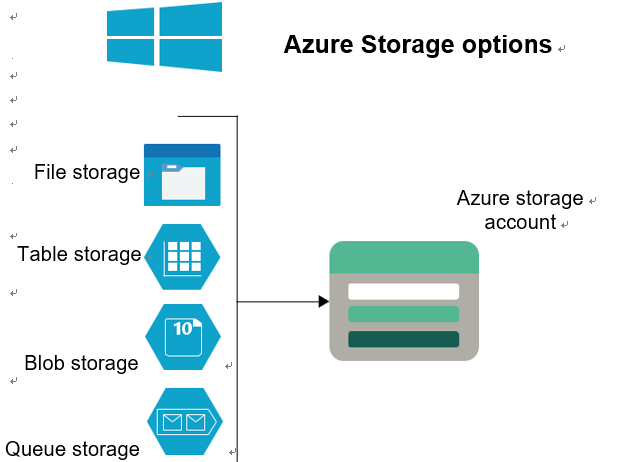
FIGURE 3-2 Azure Storage options
Skill 3.1: Describe capabilities of Azure Storage CHAPTER 3 75
■■ High durability and availability: Azure Storage ensures data replication across data-centers for high availability and data protection. Figure 3-3 illustrates Azure Storage data replication.

FIGURE 3-3 Datacenter replication
■■ Security and compliance: Features such as Azure Active Directory authentication and role-based access control bolster security. Figure 3-4 shows a flowchart of the security features in an Azure Storage account.
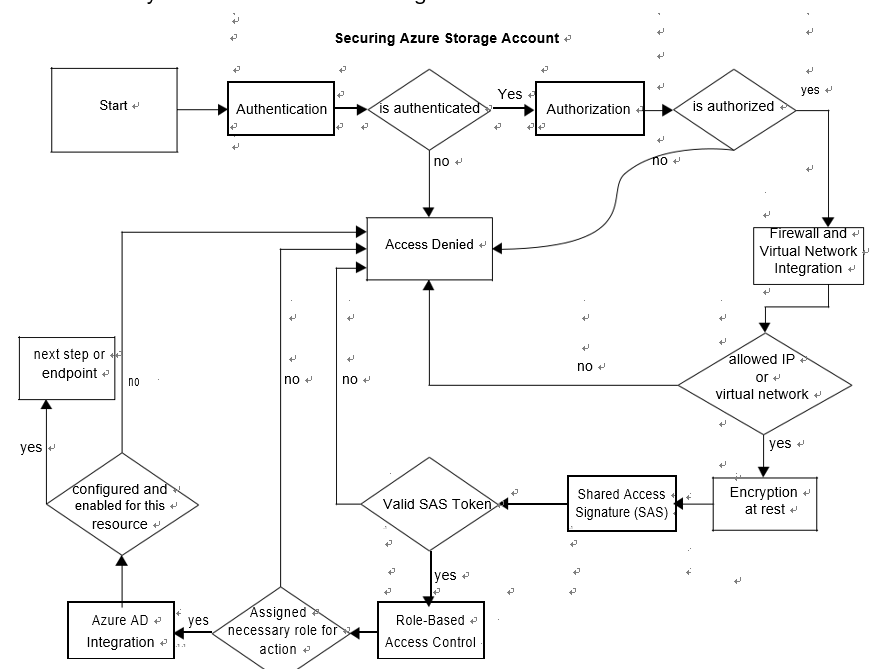
FIGURE 3-4 Security features in an Azure Storage account
76 CHAPTER 3 Describe considerations for working with non-relational data on Azure
■■ Scalability: Azure Storage is capable of handling large volumes of data with its scalability options, as shown in Figure 3-5.
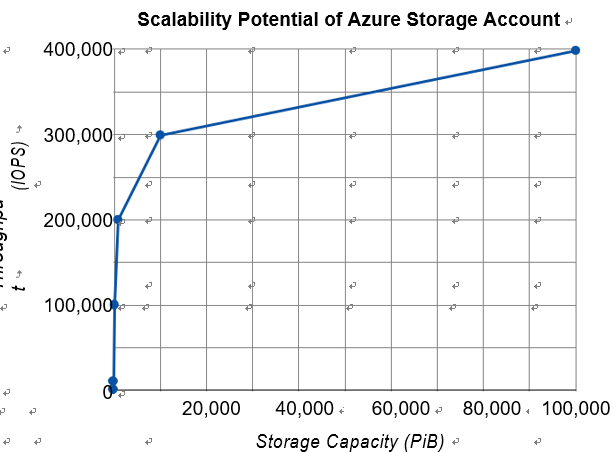
FIGURE 3-5 Scalability potential of an Azure Storage account
■■ This graph reveals the remarkable scalability potential of Azure Storage accounts, demonstrating their ability to handle massive amounts of data and high-traffic scenarios.
Here are the highlights of scalability in Azure Storage accounts:
■■ Massive storage potential: Azure Storage accounts can scale to more than 80
PB, accommodating vast datasets and supporting significant growth.
■■ High performance: With peak throughput exceeding 20,000 IOPS, these accounts can efficiently handle heavy workloads and numerous concurrent requests.
■■ Independent scalability: Storage capacity and throughput can be scaled independently, allowing you to tailor the account to specific needs.
■■ Flexible options: You can choose between standard and premium storage accounts, balancing cost with performance requirements.
Here are the scalability features available for Azure Storage accounts:
■■ Tier up: You can upgrade to premium storage for increased performance and capacity.
■■ Add storage: You can increase capacity without impacting performance by adding more petabytes to your existing account.
Here are the applications that can use Azure Storage:
■■ Web applications: You can store static and dynamic content with high availability and scalability.
Skill 3.1: Describe capabilities of Azure Storage CHAPTER 3 77
■■ Media streaming: You can deliver high-quality video and music streams worldwide with efficient data access.
■■ Big data analytics: You can process massive datasets effectively with reliable storage and high throughput.
■■ Machine learning: You can train and store machine learning models with robust infrastructure.
Here are the benefits of Azure Storage:
■■ Cost-effectiveness: You pay only for the resources you use, optimizing your storage expenses.
■■ Data resilience: Replicated data ensures high availability and protects against data loss.
■■ Global accessibility: You can access your data from anywhere in the world with low latency.
■■ Security: Advanced security features safeguard your data against unauthorized access.
■■ Global reach: Data can be stored in datacenters around the world, aiding in data localization and access speed. Figure 3-6 shows a map of Microsoft datacenters around the world.
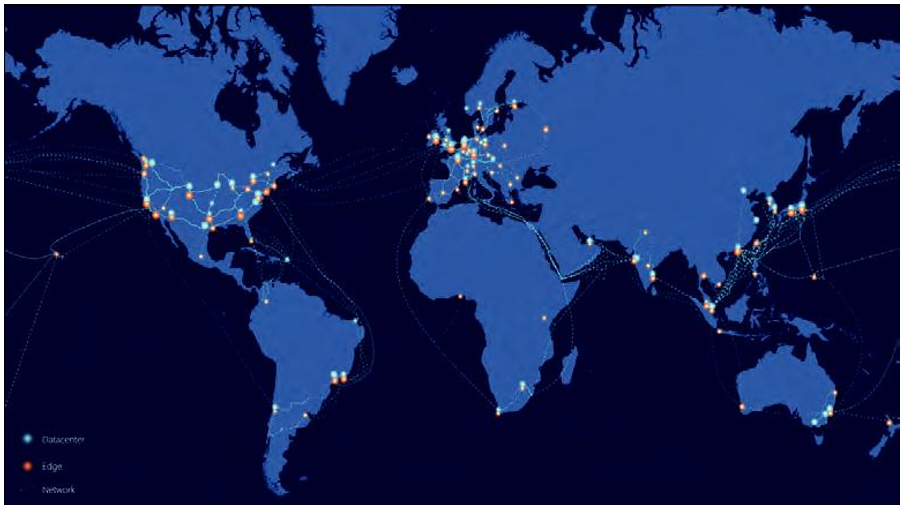
FIGURE 3-6 Microsoft datacenters around the world
■■ Cost-effectiveness: Various pricing tiers are available to suit different requirements and budgets. Table 3-1 compares the pricing tiers for Azure Storage accounts.
78 CHAPTER 3 Describe considerations for working with non-relational data on Azure
TABLE 3-1 Azure Storage account pricing tiers
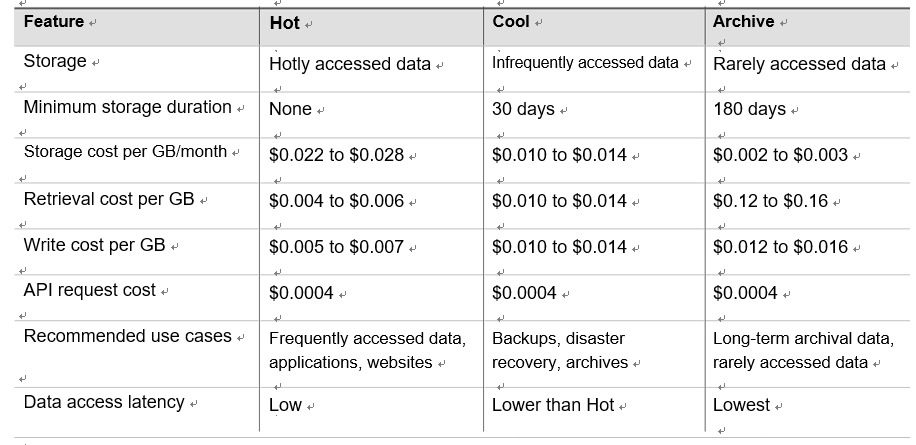

Leave a Reply